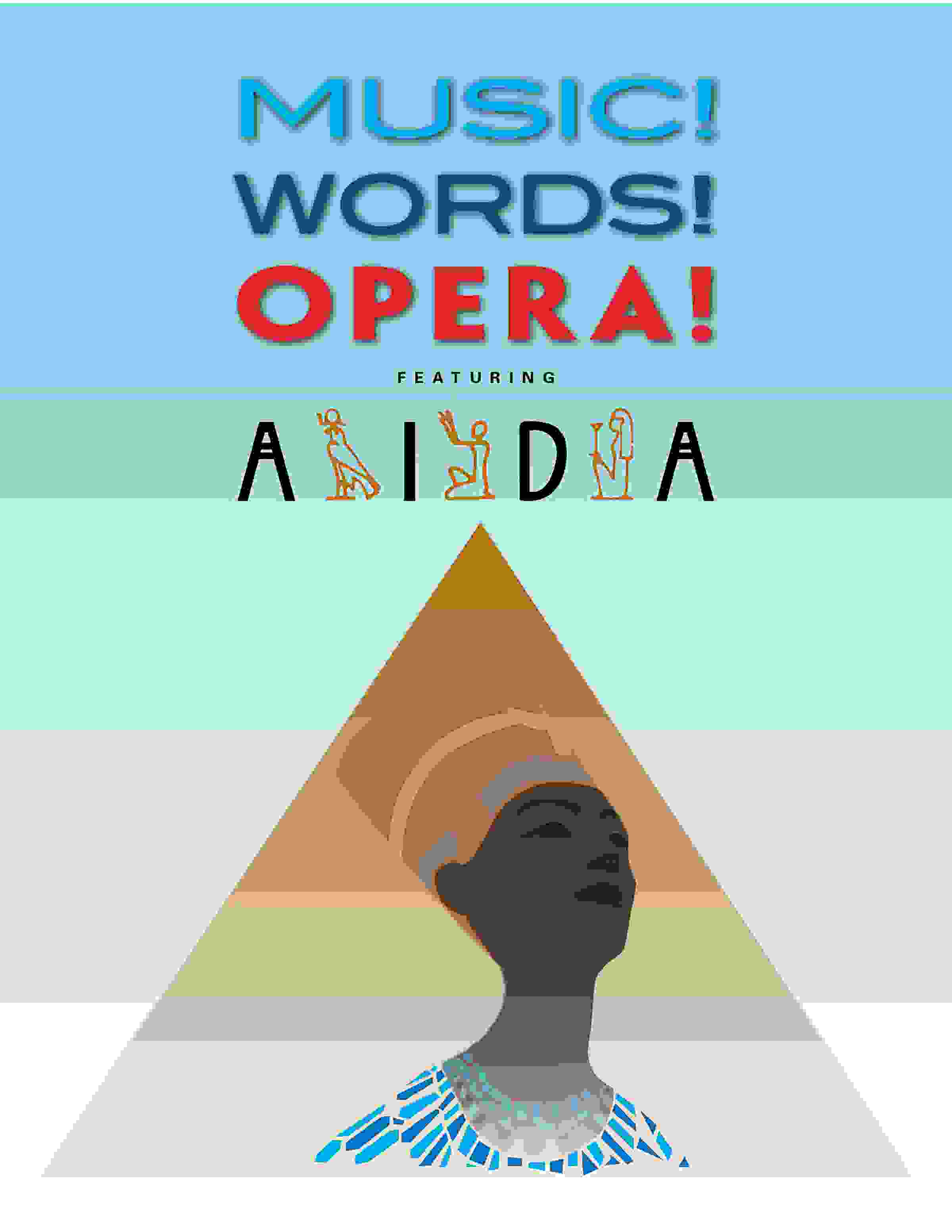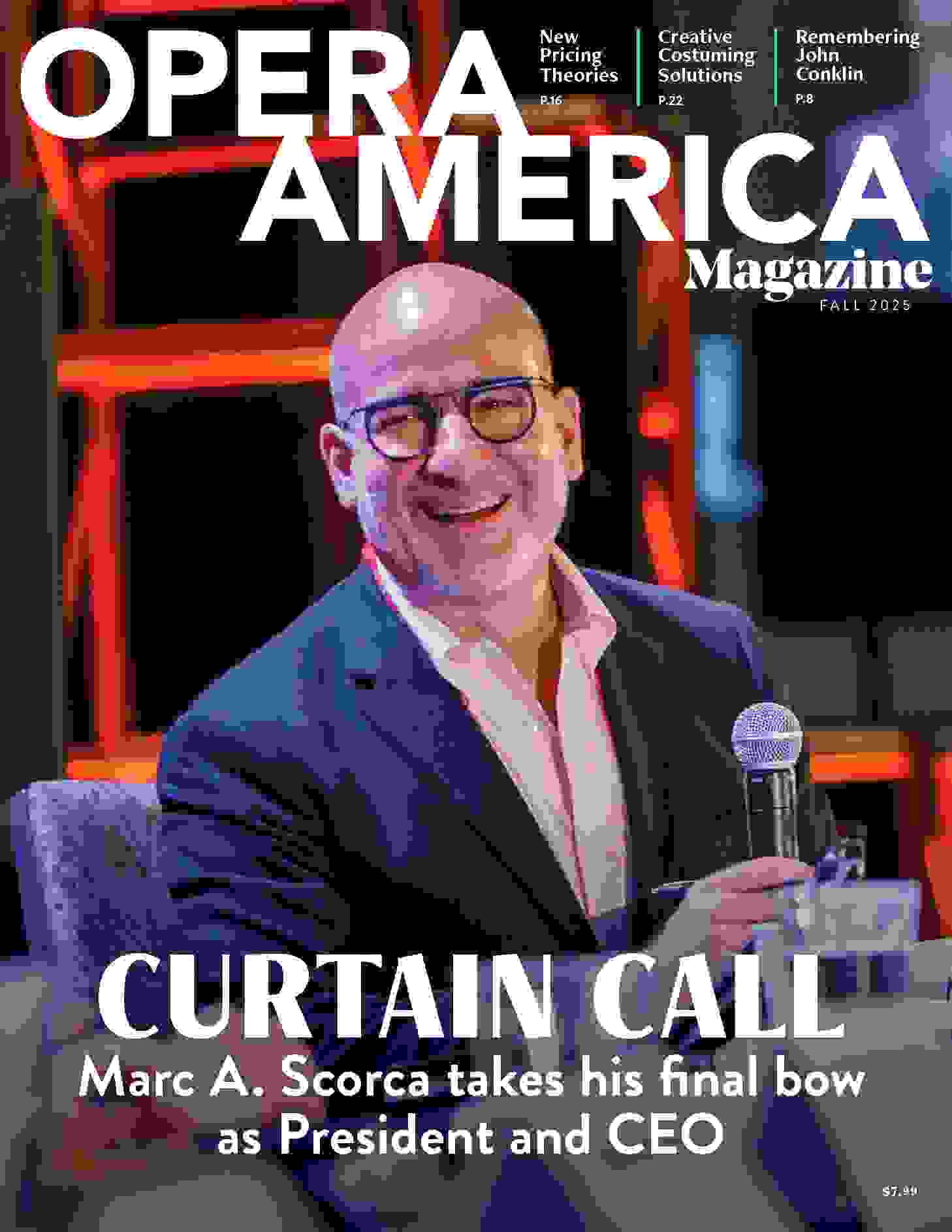1990s Milestones
The 1990s were a time of profound growth for OPERA America, as it expanded its role in serving opera companies. Here are a few of the developments from that decade that reshaped OA:
Music! Words! Opera!
Music! Words! Opera! — a textbook and curriculum series for incorporating opera into classroom learning — was developed in the 1980s by OA’s then director of education, Marthalie Furber, and officially launched in 1990. Supported by the Hearst Foundations, M!W!O! was the first-ever set of resource materials designed to guide students through the discovery of how opera is relevant to their lives and how they can create, produce and perform their own operas. It was intended to show that the process of creating art includes fundamental components of learning, relevant to many academic disciplines. Opera companies across the country played a key role implementing the curriculum, which centered on operas like Aida and Hansel and Gretel, by hosting training sessions for classroom teachers in the summer.
M!W!O! represented a shift away from education programs, like student matinees, that took place exclusively in the opera house and were intended to build future audiences. David Gockley, then general director of Houston Grand Opera, commented on the revolutionary nature of the program in a promotional brochure: “This is the first time we have asked schools what we can do for them. We are going about this with a real sense of service. The usual way has been to expect education to recognize our greatness and come to our door. Now we’re saying, ‘Here is the way our resources can be used in your classroom, week to week.’”

Scorca Joins OPERA America
Marc A. Scorca joined OA as president and CEO in 1990, and brought with him a perspective on how the organization could broaden its service. “When I had been managing director at Chicago Opera Theater, I realized that OPERA America was not serving the companies fully; it was serving the general directors, but not the companies,” says Scorca. “I brought my own observation that the organization could be much more useful if we expanded service to all of the departments and all of the staff, and if we found a way to include trustees, because a strong company has to have a strong board.”
Central Opera Service
OA inherited the archives of the Central Opera Service (COS), a department of the Metropolitan Opera National Council that, from 1954 until its closure in 1990, documented opera productions across the U.S. and aggregated review clippings. OA carried on the COS’ role of tracking performances and repertory, and made the information accessible in two online databases: the Schedule of Performances and the North American Works Directory. The COS archives also marked the start of OA’s library collection, which has grown to include more than 2,000 reference books and scores, the archives and annotated scores of Julius Rudel, and OA’s own institutional archives.
Opera World Catalog
One of OA’s less successful experiments was the purchase of Opera World, a mail-order company that offered a catalogue of opera CDs and videos/ While the business was initially profitable, it soon become obsolete due to the rise of Amazon in the late 1990s and the decline in the production of opera recordings.
National Institute for Music Theater
The National Institute for Music Theater, founded in 1970 as the National Opera Institute to promote the growth of new opera, closed its doors in the early 1990s. At that time, OA absorbed the institute’s fellowship program, a precursor to OA’s Leadership Intensive program that provided leadership training to administrators and artists. OA also took on one of the institute’s primary functions: serving as a think tank for the opera field.
Opera for a New America
OA began funding new repertoire in the 1980s, but it wasn’t until 1991, with the establishment of the Opera for a New America program, that the organization began to award audience-development grants specifically for new works. Funded by $5 million from the Lila Wallace-Reader’s Digest Fund (now the Wallace Foundation), Opera for a New America Grants helped opera companies reach audiences through activities focusing on the creative process, such as performances of excerpts of works-in-progress and discussions with composers and librettists. “The goal was that when the premiere actually came, the local audience would already have a stake in,” says Scorca, “because they would appreciate the developmental process and be familiar with the story and musical style.”
Next Stage Grants
In 1996, OA established Next Stage Grants to fund for second and subsequent productions of modern American operas. Says Scorca, “We felt that the next important aspect of our support of new work was to allow works that were good to be seen again and perhaps adjusted — trimmed or reorganized — and ultimately to establish their place in the American opera canon.” Through the early 2000s, the program supported productions of works like Carlisle Floyd’s Of Mice and Men, Philip Glass’ Akhnaten and Jake Heggie and Terrence McNally’s Dead Man Walking.
This article was published in the Spring 2020 issue of Opera America Magazine.





